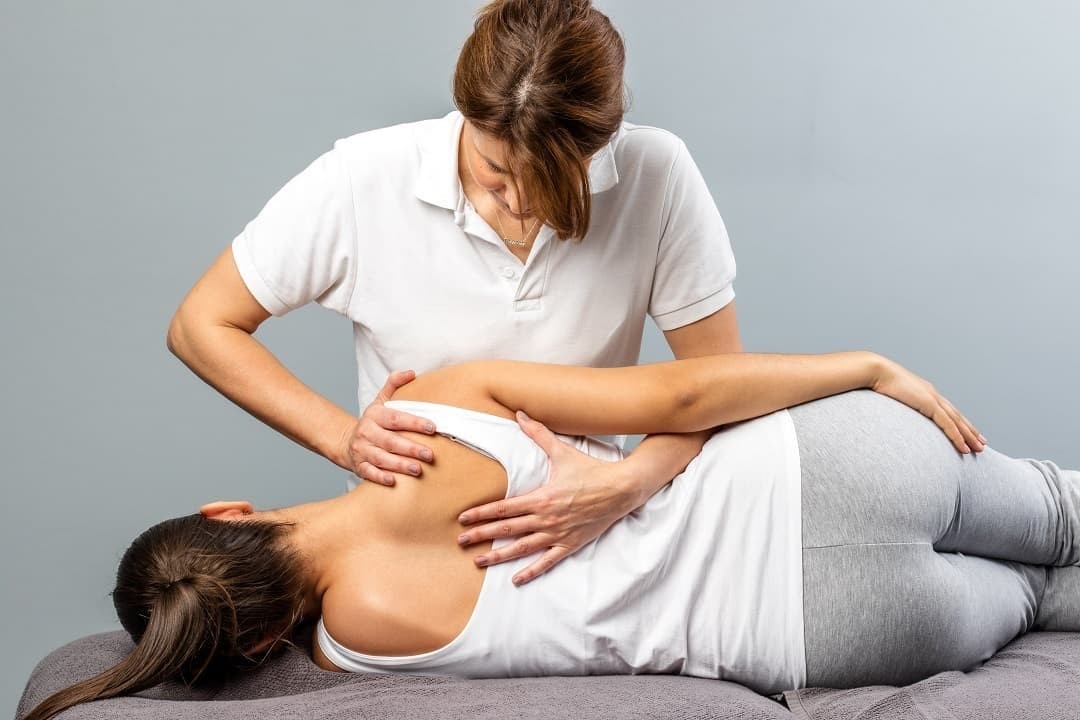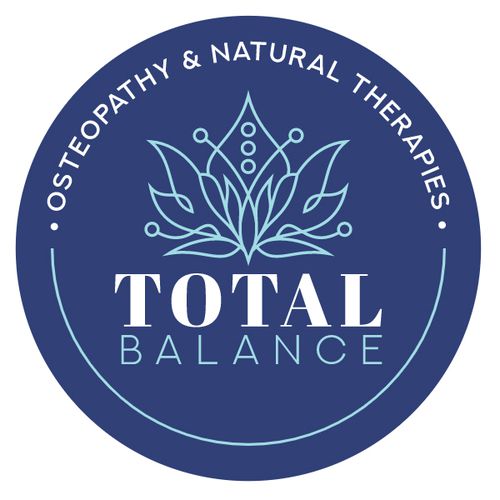
Massage is a natural treatment used to relieve the symptoms and pain associated with a range of ailments and conditions, including osteoporosis. Massage has been used across a myriad of cultures for therapeutic effect, and is especially associated with the relief of tension and enhanced circulation.
What is Osteoporosis?
Osteoporosis is a condition where bone conditioning deteriorates, leading to fragile bones that are easily broken. This is often related to the natural ageing process, where bone density is not continually replenished, or in the case of postmenopausal women – where hormonal changes can often lead to the condition.
Although it primarily affects women after menopause, this medical condition can also affect younger people and children. Certain lifestyle factors that can lead to it include lack of regular exercise, smoking and excessive drinking. Bone pain, loss of height and curved thoracic spine, are the common symptoms of osteoporosis.
What is Massage?
Massage or body work is an ancient therapy that involves the physical manipulation of the muscles and tissues of the body. This is typically experienced in a reclining position, on your back or stomach; though chair massage is also commonly practised as well. There are numerous types or styles of massage, and your therapist will decide which is the most appropriate if you are suffering from osteoporosis.
The benefits of massage are numerous and include:
- Reduction in stress and nervous tension
- Enhanced blood flow and lymphatic circulation
- Reduction in pain
- Enhanced mental alertness
- Reduced muscle tension
- Increased bone strength
- Reduced risk of bone fractures
- Delay in loss of bone density
How Can Massage Help Osteoporosis?
Massage benefits people with osteoporosis as it strengthens bone tissue. It can be a beneficial treatment for someone who is recuperating from a fracture of a bone or limb. This condition is often accompanied by muscle stiffness and massage can often offer symptomatic relief, though only in the hands of a qualified therapist.
There are two types of massage that are useful for osteoporosis sufferers: Swedish Massage and Lymphatic Drainage Massage. However, your massage therapist will have to assess your body's condition before treatment starts.
Swedish Massage
Swedish massage is a gentle massage treatment that offers a wide range of health benefits, one of which is as a pain reliever. It also reduces stiffness and increases blood flow throughout the body. Swedish massage also has advantages in terms of improved functional performance.
This gentle massage for osteoporosis employs light pressure that is relaxing, and it helps get rid of knots in the muscles. This benefits the circulatory system throughout the entire body. Additionally, research shows that this beneficial massage reduces blood pressure, stress levels and depression rates.
Lymphatic Drainage Massage
Lymphatic drainage massage, also known as manual lymphatic drainage (MLD), is a gentle massage technique that encourages the movement of lymph fluids throughout the body. While it may not directly impact bone density in individuals with osteoporosis, it can potentially offer some benefits for those dealing with the condition. Here's an outline of lymphatic drainage massage for osteoporosis:
-
Technique: Lymphatic drainage massage utilizes light, rhythmic strokes that follow the natural direction of the lymphatic system. This gentle technique helps to stimulate the movement of lymphatic fluids, which can reduce swelling and improve immune system function.
-
Safety: Given its gentle nature, lymphatic drainage massage can be a safe option for individuals with osteoporosis when performed by a trained and experienced therapist. However, it is essential to consult with a healthcare professional before undergoing any massage therapy to ensure it is appropriate for your specific needs.
-
Potential benefits: While lymphatic drainage massage does not directly address bone density, it can offer some benefits for individuals with osteoporosis:
a. Reducing swelling: Lymphatic drainage massage can help reduce swelling and inflammation, which may provide relief for individuals experiencing pain and discomfort related to osteoporosis.
b. Improving circulation: The gentle strokes of lymphatic drainage massage can help improve circulation, promoting overall health and well-being for individuals with osteoporosis.
c. Promoting relaxation: Lymphatic drainage massage can help promote relaxation, reduce stress, and improve sleep quality, all of which are crucial for overall health and well-being in individuals with osteoporosis.
-
Precautions: When considering lymphatic drainage massage for osteoporosis, keep the following precautions in mind:
a. Consult with your healthcare provider to ensure that lymphatic drainage massage is appropriate and safe for your specific needs.
b. Choose a trained and experienced massage therapist who is knowledgeable about working with clients with osteoporosis.
c. Communicate your condition and any concerns with your massage therapist before your session to ensure they use appropriate techniques and pressure.
d. Inform your massage therapist immediately if you experience any discomfort or pain during the session.
Deep Tissue Massage
If using deep tissue massage for individuals with osteoporosis, it is crucial to modify the technique, as it tends to be more aggressive. This massage therapy has been shown to reduce stress levels, which can help sufferers. Furthermore, deep tissue massage can help prevent vertebral fractures, enhance range of motion, and alleviate pain. However, if not appropriately modified, this type of massage may pose a risk of injury for people with osteoporosis.
To prevent future fractures, it is essential to increase movement in bones weakened by osteoporosis. This approach not only helps prevent further bone density loss but also reduces the risk of falls due to poor balance or weakened muscles resulting from inactivity.
Massage is a comprehensive manual therapy that, when combined with an appropriate exercise regimen, can promote bone health. This regimen should include weight-bearing aerobic activities or any physical activity that puts stress on the bones.
Before proceeding with this type of massage, consult with your doctor and a qualified massage therapist to ensure its safety and effectiveness for your specific needs.
Hot Stone Massage
Hot stone massage involves the use of heated stones placed on the body or used by the therapist to perform massage strokes. While hot stone massage can be relaxing and provide some benefits, it may not be the best option for individuals with osteoporosis due to the following reasons:
-
Fragile bones: Individuals with osteoporosis have fragile bones that are more prone to fractures. The pressure applied during a hot stone massage, combined with the heat from the stones, may pose a risk of injury or fractures, particularly if the therapist is not experienced in working with clients with osteoporosis.
-
Heat sensitivity: Some individuals with osteoporosis may have increased sensitivity to heat due to medications or other health conditions. Hot stone massage may not be suitable for those who are sensitive to heat or have difficulty regulating their body temperature.
If you have osteoporosis and are considering hot stone massage, it is essential to consult with your healthcare provider to ensure that it is safe and appropriate for your specific needs. If approved by your healthcare provider, make sure to choose a trained and experienced massage therapist who is knowledgeable about working with clients with osteoporosis. Communicate your condition and any concerns with your massage therapist before your session to ensure they use appropriate techniques and pressure.
Evidence of Effectiveness of Massage for Osteoporosis
While massage therapy can provide numerous benefits for overall well-being, there is some evidence supporting its direct impact on osteoporosis. Osteoporosis is a condition characterized by a decrease in bone density, making the bones fragile and more prone to fractures. Most studies related to massage therapy and osteoporosis focus on the potential benefits of massage on associated symptoms, such as pain, muscle stiffness, or decreased mobility.
A few studies have explored the potential benefits of massage therapy for individuals with osteoporosis or related conditions:
-
A 2014 study published in the Journal of Physical Therapy Science investigated the effects of lumbar muscle strengthening exercises combined with massage on pain, muscle strength, and balance in postmenopausal women with osteoporosis. The study found that the combination of exercises and massage significantly improved pain, muscle strength, and balance compared to the control group. However, this study focused on the combination of massage and exercise, making it difficult to determine the specific contribution of massage therapy
-
A 2018 study published in the Journal of Back and Musculoskeletal Rehabilitation explored the effects of myofascial release therapy (a specific type of massage) on pain and quality of life in postmenopausal women with chronic low back pain due to osteoporosis. The study found that myofascial release therapy improved pain and quality of life compared to the control group
While these studies suggest that massage therapy may help alleviate some symptoms associated with osteoporosis, it is important to note that they do not provide evidence of massage therapy directly improving bone density or the underlying condition of osteoporosis. Further research is needed to determine the potential benefits of massage therapy for individuals with osteoporosis.
It is crucial for individuals with osteoporosis to consult with a healthcare professional before undergoing massage therapy to ensure it is safe and appropriate for their specific needs. In some cases, massage may be contraindicated or require modifications to avoid exacerbating the condition or causing injury.
Precautions to Take
If you have osteoporosis and are considering massage therapy, take the following precautions:
- Consult with your healthcare provider to ensure that massage therapy is appropriate and safe for your specific needs.
- Choose a trained and experienced massage therapist who is knowledgeable about working with clients with osteoporosis.
- Communicate your condition and any concerns with your massage therapist before your session.
- Ensure that your massage therapist uses gentle techniques and avoids aggressive pressure, stretches, or joint mobilizations that could increase the risk of injury or fractures.
- Inform your massage therapist immediately if you experience any discomfort or pain during the session.
To get the most out of your massage treatment session, see to it that your massage therapist is qualified and registered with an appropriate national association. This will ensure they have the appropriate qualifications and are competent in the discipline; and that they are also in possession of all the relevant indemnity cover.
Find out about other effective natural osteoporosis treatments.
Originally published on Jun 16, 2010








